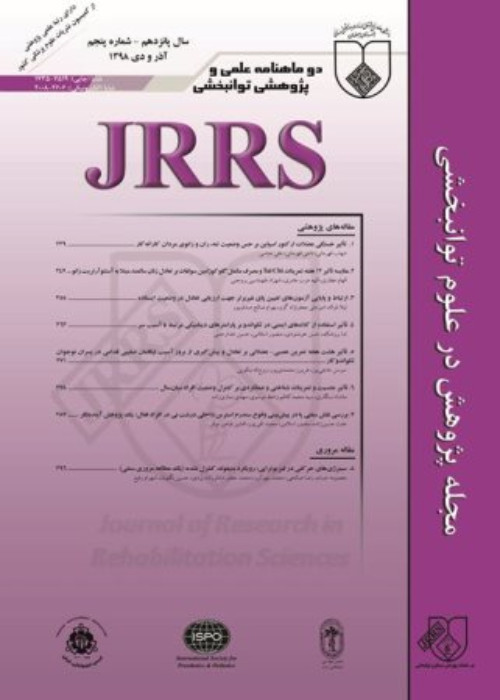Efficacy of long-term outcomes and prosthesis satisfaction in war related above knee amputees of Tehran in 1387
Author(s):
Abstract:
Background and
Purpose
Amputation is one of the most deleterious events that one may experience throughout his/her life. Gait patterns adopted by Amputees with prosthesis can cause such various types of pain as back pain, hip joint pain and contralateral pain. Knowledge about existing problems associated with amputated limb can be useful in making decisions about appropriate treatment plans and rehabilitation programs for these patients. The aim of this study was to evaluate long-term outcomes and prosthesis satisfaction in persons with war-related above-knee amputations.Material And Methods
Sixty-one Iranian subjects with above knee amputation were requested to fill out the Persian version of Prosthesis Evaluation Questionnaire (PEQ) and to judge whether they were satisfied with their current prosthesis.Results
Phantom sensation, phantom pain, residual limb pain, lateral limb pain and back pain was respectively reported in 88.5%, 77%, 36.1%, 33% and 72.1% of the subjects. Moreover, it became evident that 19.67% of the subjects were truly satisfied with their current prosthesis.Conclusion
According to study results, phantom sensation, phantom pain, back pain, residual limb pain and pain in the lateral limb are the most prevalent outcomes of war related amputations. Satisfaction rates were higher than moderate in more than half of the patients studied.Language:
Persian
Published:
Journal of Research in Rehabilitation Sciences, Volume:7 Issue: 1, 2011
Page:
66
https://magiran.com/p897768
مقالات دیگری از این نویسنده (گان)
-
Investigating the Prevalence of Positional Plagiocephaly With 3D Scan in Children Under One Year of Age in Mofid Hospital
Esmaeil Chahaki, Mohamadali Javanshir, Hassan Saeeidi*, Mohamdmahdi Taghdiri
Function and Disability Journal, Winter 2021 -
A Comparison the spatiotemporal efficiency of two designs of Posterior Leaf Spring (PLS) and pneumatic damper ankle-foot orthoses (AFO) in drop foot
Hassan Saeedi, Ensieh Pourhoseingholi*, Mohammad Kamali
Function and Disability Journal, Winter 2019



